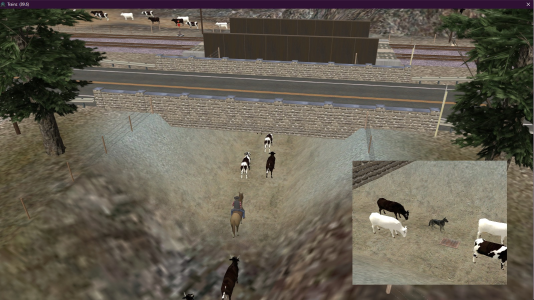burroughs85
Well-known member
Cattle Drive with Underpass in Rural Northwestern America in a Virtual Outdoor 1/10th Scale Model Railroad Layout
The underpass saves cattle and vehicles and trains and saves people in vehicles. Also a safe crossing for wild animals and human hikers and their dogs. You can probably guess what the pump house nearby is for. I wonder who pays for the construction and maintenance of such underpasses.
Here is a real-world underpass for cows:
The underpass saves cattle and vehicles and trains and saves people in vehicles. Also a safe crossing for wild animals and human hikers and their dogs. You can probably guess what the pump house nearby is for. I wonder who pays for the construction and maintenance of such underpasses.
Here is a real-world underpass for cows:



